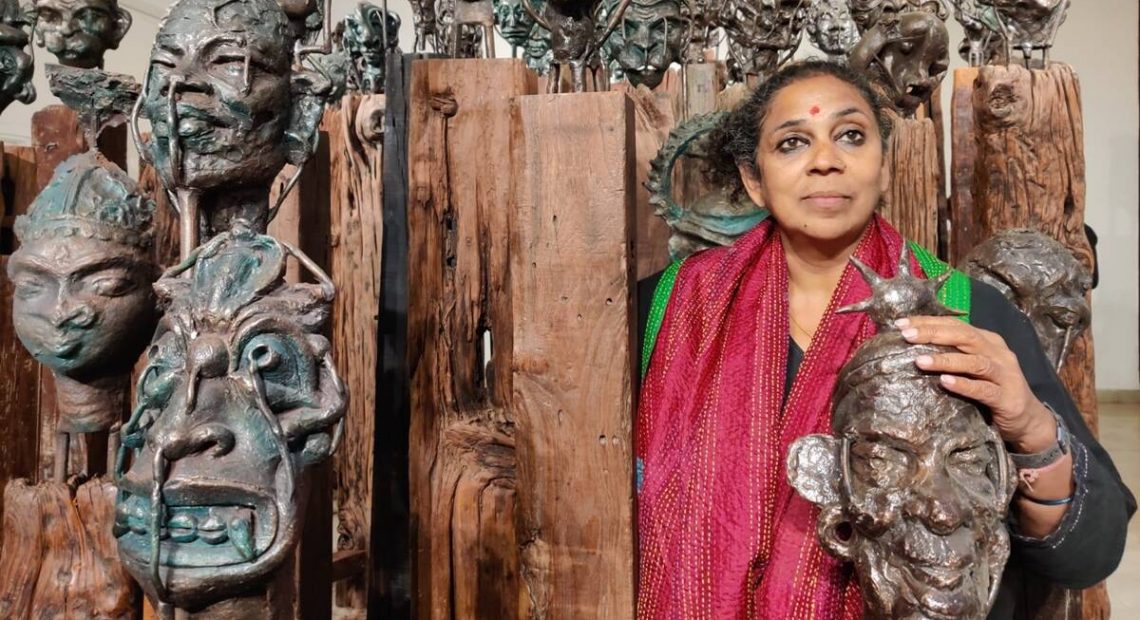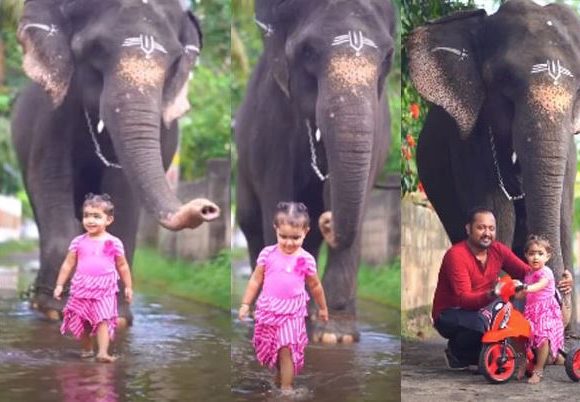‘Nitya,’ a new exhibition by artist Nivedita Mishra, depicts the nine astral bodies

Nivedita Mishra, an artist, recalls fondly her childhood, when she would eagerly dip her fingers into her mother’s rice-paste rangoli.
She would eagerly anticipate traditional festivals in her village of Raksimunda, Odisha, and the harvest season of Margasira, when Lakshmi pooja would be performed at home every Thursday and rangolis designed with a variety of motifs, including the lotus flower, conch shell, elephant, and fish. “I remember being recognised and appreciated for my art,” Mishra says. She also remembers being enthralled by stones and arranging them in different patterns. “I’d stare at them for hours, discovering unexpected tints, tonalities, and forms in them.” “I used to go to stone quarries and enjoy the sound of grinder machines and hammers while letting the stone dust settle on me,” Mishra, 55, adds.
She chisels the stones for years, giving them various shapes and forms. Some of these are being shared with the audience in her ongoing solo in the Capital. The exhibition at Triveni Kala Sangam, titled ‘Nitya,’ is dedicated to her father, politician Nityanand Mishra, who died last year. “He was a huge pillar of support and encouragement,” Mishra says. While she has participated in exhibitions all over the world and collaborated on the ‘Cenotaph’ project at the National Police Memorial (2018) with her husband and NGMA director Adwaita Gadanayak, she has been considering a solo show for some time. Gadanayak was the one who reserved the venue, giving Mishra a deadline to meet. “It was a surprise,” Mishra adds, “but once I knew the exhibition was going to happen, things started moving faster.” Visitors to the show will be greeted by pillars carved from black marble stones with symbols of the navagrahas, or nine planets. She inscribes a Vedic mantra on each of them. “The body of work represents the nine astral bodies that influence our lives and environments: Surya, Chandra, Mangala, Budha, Brihaspati, Shukra, Shani, Rahu, and Ketu.” “A trishul depicts their deep, celestial connection with Shiva,” says the Delhi College of Art graduate.
Mishra casts various parts of Sati in the exhibition hall, including her lips, ears, eyes, nose, right foot, and anklet, which are thought to have fallen in various parts of India. The centrepiece is a sculptural installation consisting of 64 yoginis cast in metal and placed in a triangle shape on wood, dedicated to Kamakhya, “who has the power to generate and regenerate life.” “These are also inspired by the tribes in Odisha and the terracotta figurines of mother goddesses found in villages across India,” the artist says, adding, “These are also inspired by the tribes in Odisha and the terracotta figurines of mother goddesses found in villages across India.” Faith knows no bounds.”
Picture Courtesy: Google/Images are subject to copyright








